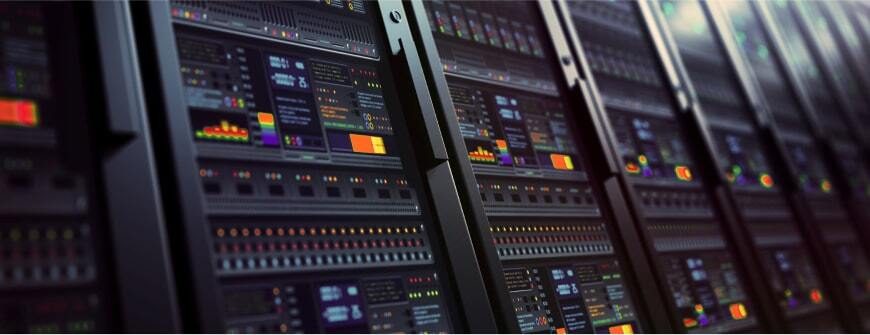立式伺服器的外觀與具有標準大小機殼的桌上型電腦類似。中小型組織使用的首款伺服器是立式伺服器。他們使用標準電腦機殼,在塔中安裝高階元件。打造立式伺服器與打造標準桌上型電腦略有相同,但它需要進階元件,才能處理更高 CPU 和網路負載,並擁有更多儲存空間。
什麼是立式伺服器?
伺服器是處理許多網路環境流程的集中式電腦。您可能擁有數個伺服器來處理業務的不同層面。例如,您可能擁有 FTP 伺服器、檔案儲存伺服器、應用程式伺服器和電子郵件伺服器。對於每台機器,您可能擁有一台立式伺服器。立式伺服器並非您唯一的選擇,但 有些中小企業選擇使用。
立式伺服器的元件為何?
立式伺服器使用標準桌上型電腦中的任何元件。主要的差別在於運算資源更加先進。通常立式伺服器擁有最新一代的元件,尤其是 CPU、記憶體和視訊卡。網路卡也必須能夠處理大量流量。有些立式伺服器有兩個網路卡,可執行路由和其他網路服務。
立式伺服器的其他元件包括主機板、視訊卡、為機器提供足夠電力的電源,以及其他各種零件,如風扇、機殼和週邊設備。如果您有多個立式伺服器,您可以使用切換方塊將滑鼠、鍵盤和監視器連接到多個立式伺服器。交換機會連接至所有塔,您可以使用交換機方塊將週邊設備切換到使用中的塔。
立式伺服器如何運作?
立式伺服器的運作方式與其他伺服器相同,但其建立方式不同。立式伺服器的運作方式取決於其用途。如果您有一台立式伺服器用作檔案伺服器,它可以連接儲存容量大的網路。在此情境中,立式伺服器有數個可用空間的硬碟,管理員可將其設定為允許授權使用者連線到個別授權目錄。
立式伺服器可作為網路上任何其他類型的伺服器。它可作為網路授權與驗證的中央伺服器。Active Directory 可能會在您的伺服器上執行,以處理環境的權限。您可以使用立式伺服器作為資料庫伺服器,儲存應用程式的資料。在其他情況下,組織可能會使用伺服器作為應用程式伺服器,儲存使用者用來執行業務軟體的可執行檔案。
使用立式伺服器的原因
對於中小型企業而言,立式伺服器可能是支援多種網路資源的完美解決方案。立式伺服器可完全根據您的運算能力需求進行自訂。如果您有小型企業,可以從立式伺服器開始支援應用程式、檔案儲存,以及各種其他網路資源,如 DHCP 和 DNS。
舉例來說,使用立式伺服器而非刀鋒或機架伺服器,可帶來多項優勢。首先,它們更容易容納和維護。任何熟悉標準桌上型電腦的人,只要瞭解伺服器上託管的其他網路功能(例如 DHCP 服務和 Active Directory),即可維持高塔狀態。
另一個好處是它們完全符合您的需求。如果您想升級立式設備,如果主機板有額外的擴充板插槽,您可以新增元件。您可以從頭開始建立自己的立式伺服器,或從首選供應商處訂購伺服器,以減少佈建和安裝立式伺服器所需的時間。
根據風扇和機殼的品質,立式伺服器通常很安靜。另一方面,機架伺服器大聲喧嘩,尤其是在單一位置有好幾個時。擁有高端風扇的立式伺服器不會產生任何噪音,這對於沒有伺服器和網路設備專用空間的小型企業而言是很理想的。
不使用立式伺服器的原因
立式 伺服器並非每個組織的最佳選擇。對於空間有限的大型組織而言,要將數座塔安裝到網路機櫃中可能很困難,因為它們非常大。此外,當您有多個立式伺服器時,纜線組織可能難以控制。相較之下,機架伺服器與機箱是為電纜組織所打造。
大型企業應考慮將機架或刀鋒伺服器建置到基礎架構中,因為它們更精巧,專為纜線組織打造。一家大型企業可能需要一台以上的伺服器,因此從機架伺服器開始,將確保您有空間在網路擴展時安裝更多伺服器。請記住,您增加到機架的伺服器越多,就越需要冷卻,才能消除多個機架或立式伺服器所產生的熱量。
結論
如果您擁有一家小型企業,立式伺服器可能是開始建立網路環境的更便利方式。隨著您的環境不斷成長,您可能會發現立式伺服器佔用太多空間,且擴充性不及機架伺服器。如果您購買多個立式伺服器來支援您的網路環境和員工生產力,請牢記這一點。最終,您可能更喜歡將機架式伺服器打造到您的網路基礎架構中,或者您可能會發現使用雲端伺服器對您的業務更方便、更有益。


